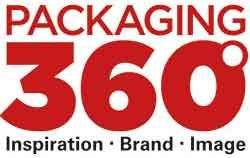“Design For Recycling Must Be a Matter of Course in Packaging”
In an interview, Prof. Thomas Klindt talks about the raw material of the future: recyclates. As a specialist lawyer for administrative law, Klindt is a partner at the law firm Noerr. He serves numerous industry clients , including the packaging and waste management sectors. Among other things, he is a member of the Scientific Advisory Board of the Research Center for Consumer Law at the University of Bayreuth.
You say EU regulations have created a recyclate market that has more demand than supply. What do you base that on?
Klindt: Let’s look at the example of disposable PET beverage bottles. By 2025, these must have a recycled content of 25 percent, and by 2030, 30 percent, according to EU regulations. In principle, I think this is the right thing to do. But the question is whether the market can actually supply so many recyclates. Then, the issue will no longer be examined from a legal perspective, but from a commercial perspective. The Schwarz Group, for example, has prepared itself for this wave: With the business expansion of the disposal company PreZero, it can produce its own recyclate. New bottles are made from Lidl PET bottles. The example of a minimum recyclate quota under European law shows: regulation is not strangulation; it can create new markets.
What are the consequences of this?
Klindt: Assuming my forecast is correct and the demand for the secondary raw material recyclate will continue to rise dramatically, we will need innovation and investment incentives. Incentives to be able to produce recyclates, not just to have to use them. This could be, for example, EU subsidies for the recyclate-producing industry. If the sorting of household waste (post-consumer recyclate, PCR) is as time-consuming and expensive as it has been up to now, one must start much further upstream in production. Design for recycling must be a matter of course for packaging. Only then will we have a true circular economy. When it comes to PIR (post-industrial recyclate) and PCR, many people mainly talk about grade purity, while the color purity of the recyclate seems to me to be underestimated as a technological challenge. Without purity, however, sorting processes often become too costly compared to the Production of primary pladtics. There is still too little packaging made from monomaterials.
The prices for recyclates are exploding. Sustainable packaging is the trend, and consumers also want it. Will retailers and consumers also be willing to pay more for it?
Klindt: No, I don’t think so. The increased prices cannot be passed on par-for-par. In the end, you have to ask whether packaging is necessary at all. If I, as a manufacturer, have to buy expensive recyclate, then that might go well for a certain time, but then I either have to increase the price of the product, give up some of my margin or discontinue the product.
The Green Deal is currently being put to the test in view of inflation and trouble spots.
Klindt: It’s a fair question to ask, how much can the Green Deal cost us? But when there is pressure to innovate, new solutions emerge. A head start through innovation: companies have the opportunity to excel through ecological innovations and securing raw materials.
We actually need a national raw material security strategy as well. We will ultimately have to produce many more primary and secondary raw materials in Europe so that we don’t have to source them from the Far East. Old mining and prospecting laws are just getting interesting again.
Several associations are calling for even higher mandatory plastic recyclate use quotas in packaging. What do you say to this?
Klindt: Instead of promoting an even higher quota, we can think about extending the successful deposit system to other products. For textiles, for example. In any case, you have to look at where the most voluminous waste streams are and which ones are suitable for a deposit system.
Recyclate pioneers like the founder of Werner & Mertz, Reinhard Schneider, warn against falsely declared recyclate in packaging and against greenwashing. Are there any legal loopholes here?
Klindt: I share this concern, but the EU is not defenseless against these things. The executive branch will act relatively quickly and at some point create a regulatory apparatus that will take over a kind of recyclate import monitoring. Basically, I expect a network of market surveillance authorities in the internal market, analogous to product safety.
Is the traceability of recyclate guaranteed?
Klindt: The topic of traceability is currently blowing up in our faces a bit. We had established systems in the German industry with meticulous documentation and digital traceability. Now, the supply chains are disrupted. Nothing fits together anymore, spare parts are missing, raw materials are scarce, containers are in the wrong places. Supply chains react with improvised substitutions, a classic aggravation. Suddenly, safety-relevant deviations lie dormant in the goods. These manufacturing defects are a classic case for product liability claims. We will see product recalls because the actual spare parts are missing. And then the products will all have to be recalled at great expense. These product recalls will be a late echo of dysfunctional supply chains and will keep us lawyers busy.
By Anna Ntemiris




